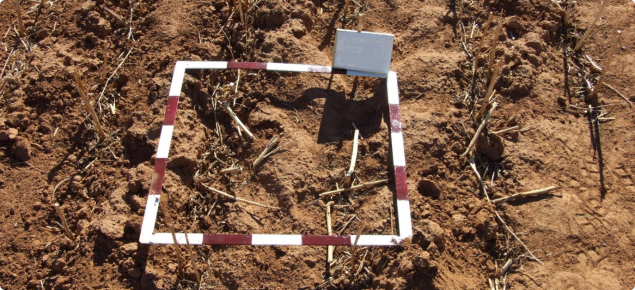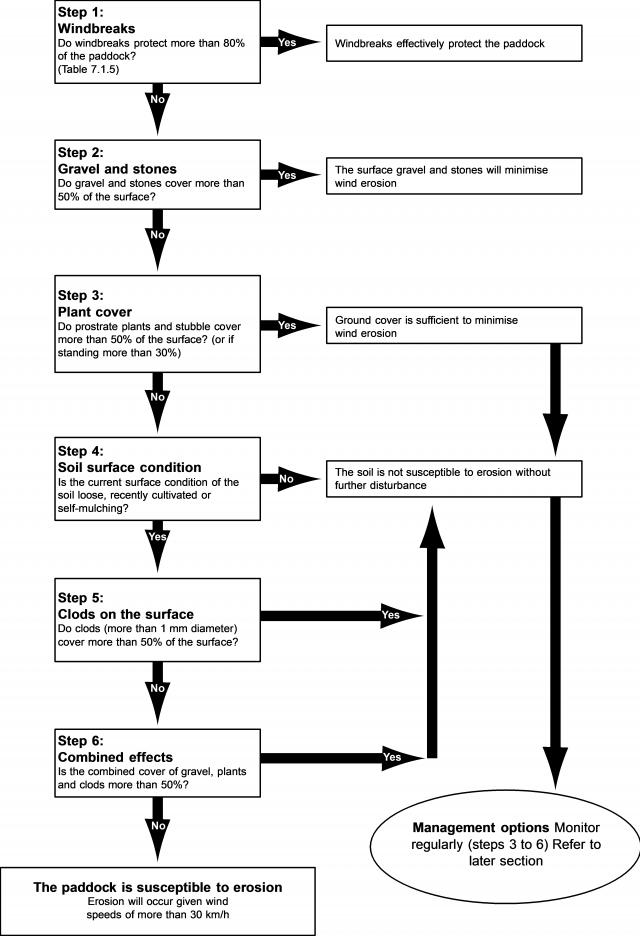Why diagnose risk?
Our definition of risk is the likelihood of something happening multiplied by the impact. The likelihood of erosion occurring is higher when all the hazards (see below) are operating at once, and the impact depends on the scale and intensity of the hazards.
Diagnose risk at any time, because there may be time to do something that will lower the likelihood and damage that wind erosion can cause.
Doing something can start years ahead for susceptible paddocks – by planting tree windbreaks or claying – or start the season ahead by retaining enough stable groundcover.
Soils that are susceptible to wind erosion are also likely to be susceptible to water erosion.
Factors (hazards) contributing to wind erosion risk
- Erosive winds: wind speeds of greater than 28 kilometres per hour are needed to move soil particles and lift dust for significant distances. Wind that stays above that threshold for many hours or even days can be very destructive. The Bureau of Meteorology provides information on wind speed and direction during the year at all Australian weather stations.
- Exposure of the soil surface: erosive winds must be able to reach the soil surface to cause erosion. Exposure can be prevented in several ways:
- landscape position: sheltered areas include valleys, gullies, downwind of ridges and hills
- tree and shrub windbreaks: native vegetation, tree windbreaks, alley systems, tagasaste plantations
- crop and stubble groundcover: retain at least 50% groundcover with at least a third of that anchored. Less than 30% ground cover has a very high hazard rating, and more than 70% ground cover has a negligible hazard rating.
- pasture groundcover: retaining at least 50% groundcover of annual pasture or perennial pasture.
- Erodible soil surface: to be eroded, the soil surface needs to be detached (disturbed or loose) at the surface. Gravelly or rocky surfaces are less erodible, and large stable clods also provide protection. The soil surface can be detached by:
- cultivation: mouldboard ploughing, spading, tyne cultivation, disc cultivation, deep ripping
- livestock movement: sheep tend to loosen more soil than an equivalent number of cattle
- vehicle movement: harvesting, seeding.
Conditions which contribute to high risk of wind erosion
Conditions that lead to a high risk of wind erosion are obvious – after the event. Being aware of these developing conditions and having a plan to deal with them can help reduce wind erosion:
- Poor seasonal conditions: dry conditions in the previous winter and spring, followed by a long, dry summer usually mean there is inadequate groundcover in late summer and autumn. Dry conditions and strong winds after seeding are hard to treat at the time.
- Grazing stubbles or pastures as the groundcover approaches critical dry matter levels or 50% groundcover; by the time that it looks like time to remove livestock, it is probably too late. Bare patches around watering points, gateways and camping pads can lead to blowouts.
- Paddock burning: full paddock burning, especially if the area has been recently grazed, will leave the soil exposed and erodible.
- Cultivation: this reduces groundcover and loosens the soil surface. Soil inversion — mouldboard ploughing, delving, spading — is the most extreme form of cultivation leading to exposure. Large stable clods or clay brought from the subsoil may reduce erodibility.
- Combinations of the conditions above.
See managing wind erosion for options to reduce the likelihood and impact of wind erosion.
Assessing the current risk
All soils can be eroded by wind in certain conditions, depending on the level of protective cover (exposure) and whether the soil is loose and dry (erodible).
Use the sytem in Figure 1 to estimate the risk of wind erosion.


